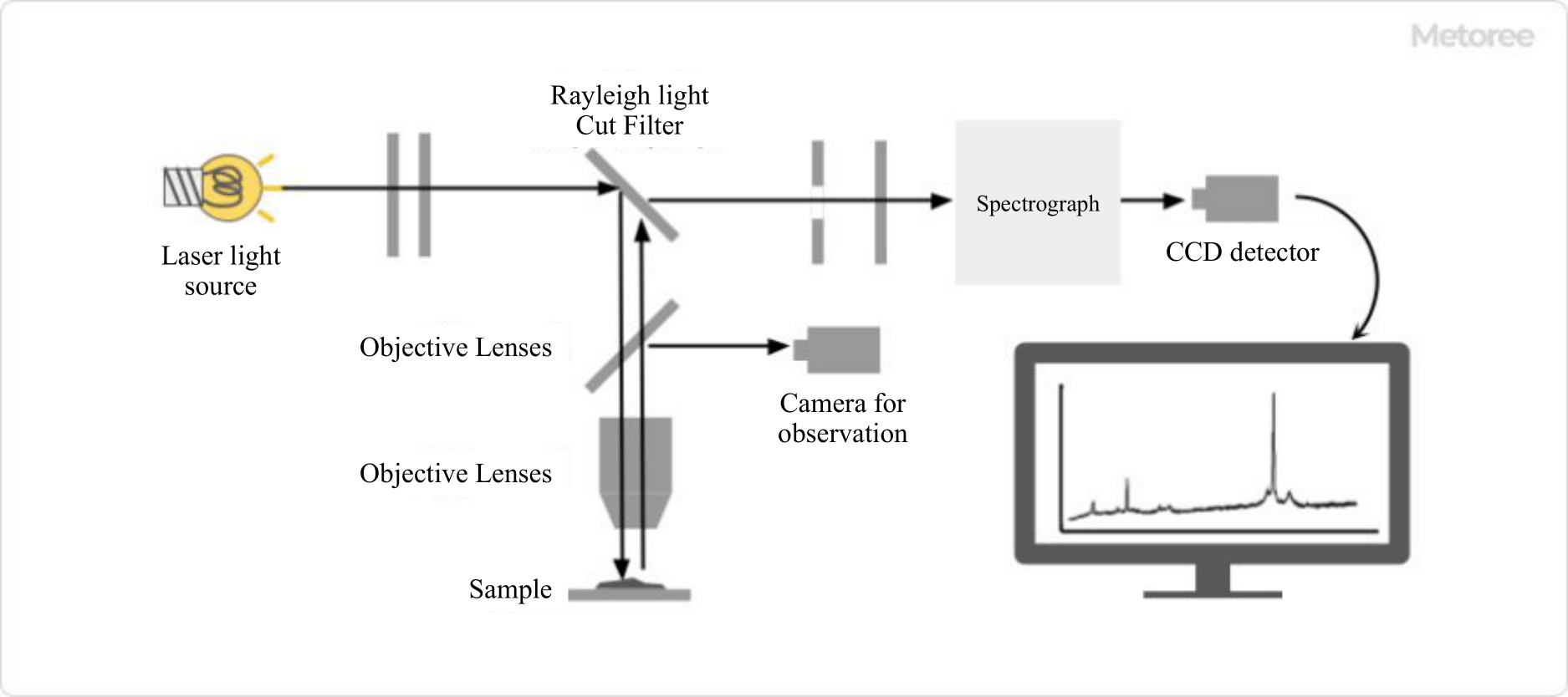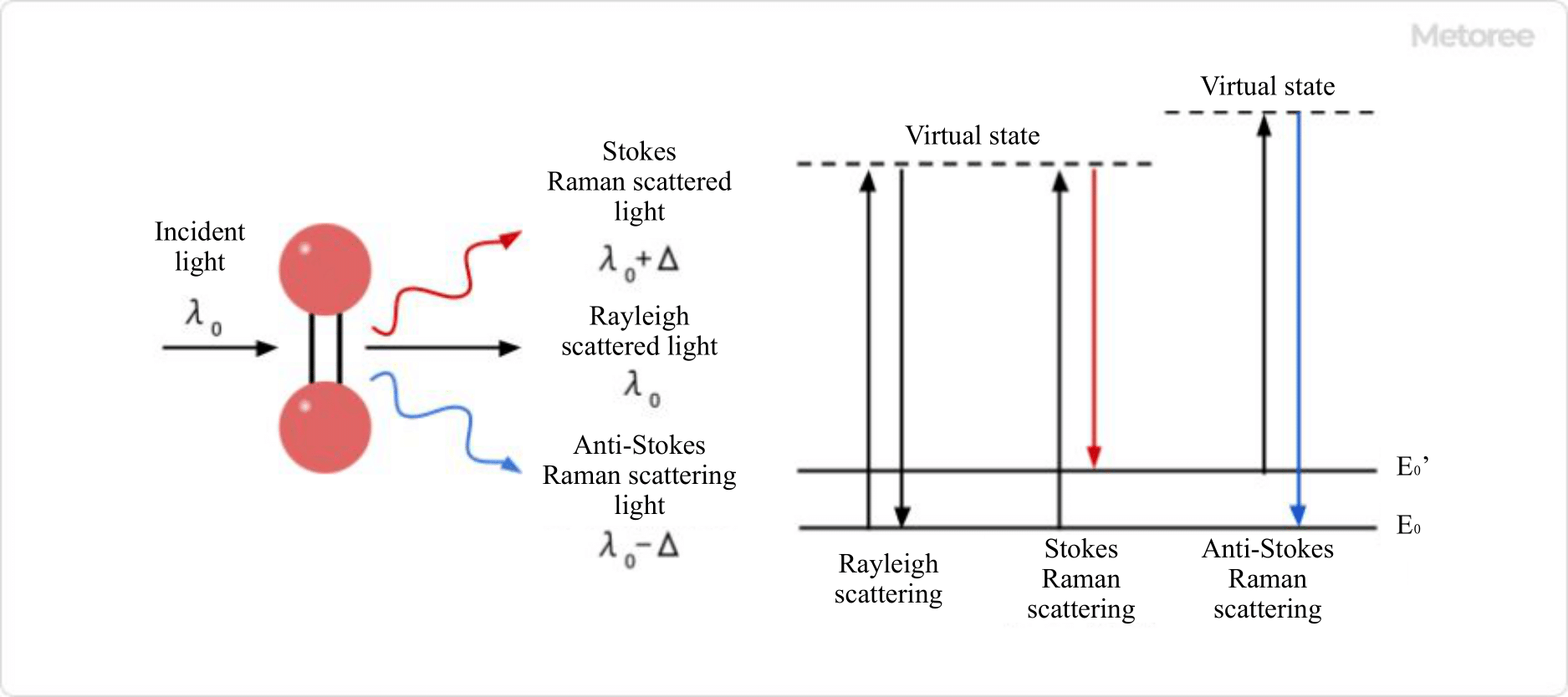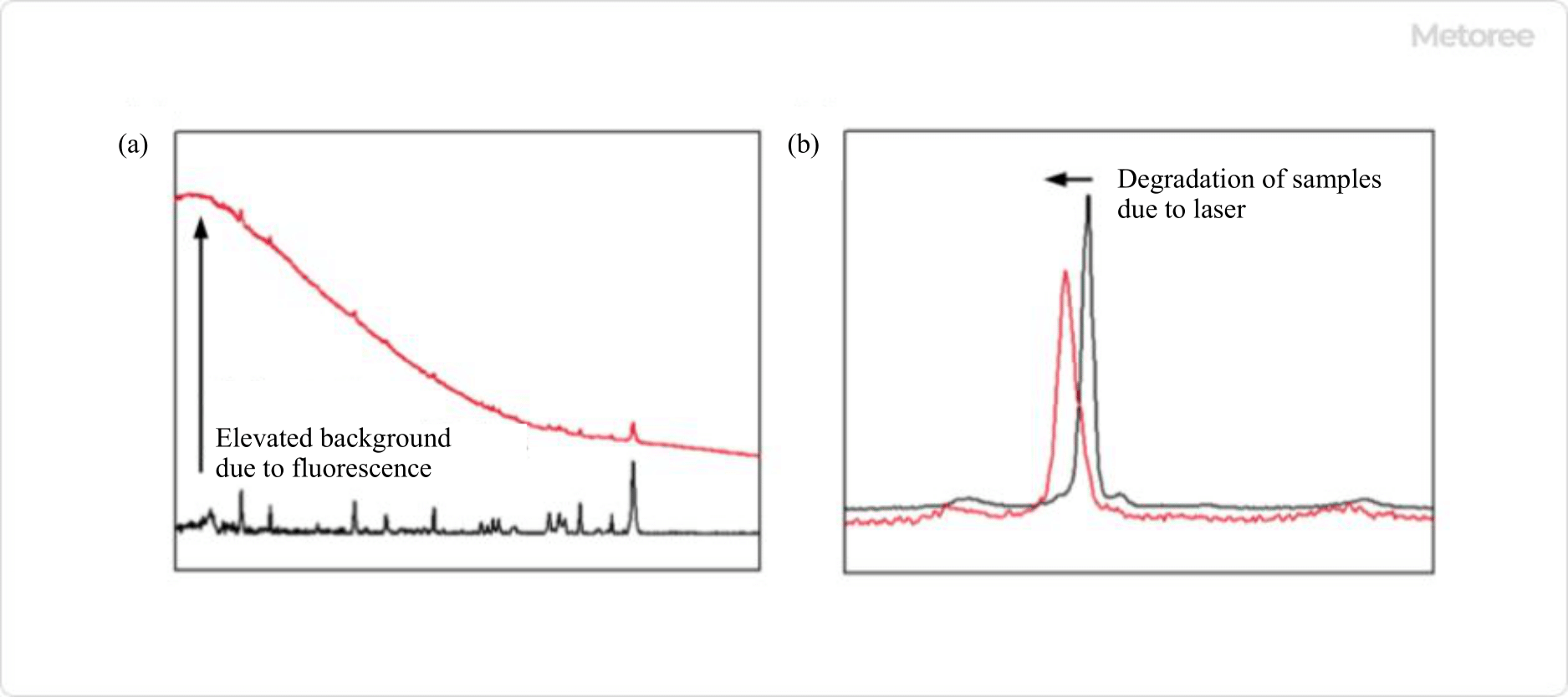











15 Raman Microscope Manufacturers in 2024
This section provides an overview for raman microscopes as well as their applications and principles. Also, please take a look at the list of 15 raman microscope manufacturers and their company rankings. Here are the top-ranked raman microscope companies as of April, 2024: 1.Miramar Communications Ltd, 2.NATIONAL ANALYTICAL CORPORATION, 3.ASML Holding N.V..
Table of Contents
What Is a Raman Microscope?
A Raman microscope (or Raman microscope) is a measurement instrument that combines a Raman spectrometer and an optical microscope.
It allows non-destructive analysis of detailed information on materials such as chemical structure, intermolecular interactions, and crystallinity. By combining a Raman microscope with a Raman spectrometer, it is possible to observe an object under the microscope and measure selected points, or to obtain an image visualizing the distribution of composition.
Uses of Raman Microscopes
Since Raman spectroscopy is based on chemical bonding, the following information can be obtained by measurement
- Chemical structure
- Phase, polymorphism
- Strain
- Impurities, contamination
Since Raman spectra are unique to each substance, they can be used to quickly identify a substance or distinguish it from other substances. Raman microscopes can also be used to analyze many different samples. In general, it is not suitable for the analysis of metals and alloys, but for the analysis of:
- Solids, powders, liquids, gels, slurries, and gases
- Inorganic, organic, and biological materials
- Pure chemicals, mixtures, and solutions
- Metal oxides and corrosion
Typical examples of where Raman microscopes are used include:
- Characterization of pigments, ceramics, and gemstones in the fields of art and archaeology
- Evaluation of the structure and purity, defects, and disorder of carbon material nanotubes
- In chemistry, structure, purity, and reaction monitoring
- In the life sciences, single cells and tissues, drug interactions, and disease diagnosis
Structure of Raman Microscopes

Figure 1. Structure of Raman microscope
The Raman microscopes are measuring instruments that combine a Raman spectrometer and a microscope.
Irradiated light from a laser source is guided to the sample through the objective lens of the microscope and irradiated onto the sample. The scattered light generated from the sample is focused by the objective lens, and only the Raman scattered light is detected through a Rayleigh light cut filter.
Principle of Raman Microscopes

Figure 2. Raman scattering
When a material is irradiated with light, a scattering phenomenon occurs. Most of the scattered light is Rayleigh scattered light with the same wavelength as the irradiated light, but some scattered light with slightly different wavelengths from the irradiated light is included, and this scattered light is called Raman scattered light.
There are two types of Raman scattering light: Stokes scattering light, which has a wavelength longer than that of the irradiated light, and anti-Stokes scattering light, which has a shorter wavelength.
Raman scattering light is produced as a result of the interaction of irradiated light with a material, and the difference in wavelength between Rayleigh scattering light and Raman scattering light corresponds to the energy of molecular vibration of the irradiated material. It is known that only Raman-active vibrational modes are responsible for Raman scattering, and it is possible to infer or simulate Raman-active vibrational modes from molecular structures.
A similar analytical instrument that uses molecular vibration is the infrared spectrophotometer, but there are differences in the molecular vibrations that can be measured, making it a complementary analytical instrument.
Different types of molecules and different bonding states produce different molecular vibration energies, resulting in different Raman spectra. Substances can be identified by comparing the peak positions and relative peak intensities of the Raman spectra with those of known substances. It is also often used for qualitative analysis by interpreting the following:
- Peak position
Chemical bond information - Peak Shift
Information on intermolecular interactions, stress, and strain - Spectral waveform
Molecular structure information, crystal structure differences - Half value width
Difference between crystalline and non-crystalline
Quantitative analysis is also available by utilizing the fact that the intensity of the spectrum is proportional to concentration.
Other Information on Raman Microscopes
1. Cautions for Raman Microscopes

Figure 3. (a) Effect of laser irradiation on fluorescence generation (b) Degradation due to laser irradiation
Since Raman scattering light is weaker than Rayleigh scattering light, a certain intensity of laser light is necessary, but the laser light may cause problems. If the wavelength of the laser light overlaps with the absorption region of the molecule to be measured, the molecule will fluoresce and the background of the Raman spectrum will increase, burying the spectrum to be obtained.
To avoid this, it is necessary to take measures such as adjusting the exposure time and other measurement conditions, adjusting the depth of focus, narrowing the spectral slit, and using a confocal filter (DSF). Other ways to suppress fluorescence include changing the laser source.
For organic materials, fluorescence often occurs when using the common 532 nm laser light, so a longer wavelength laser light, such as 785 nm, is sometimes selected. However, care must be taken when changing to a longer wavelength laser light, as the sensitivity of some monochromators and detectors may decrease drastically.
If the material to be measured is organic or carbon material, depending on the intensity and duration of the laser light, the material may be "burnt" and degraded. To prevent degradation of the measured material, the measurement conditions can be adjusted by lowering the laser intensity or shortening the exposure time.
In addition, some carbon materials are photo-reactive, meaning that they react to the irradiated laser light. Such materials can be handled by adjusting the measurement conditions in the same way, or by changing the wavelength of the laser light to suppress the photoreaction.
2. New Raman Microscopes Technology
Various techniques have been developed to improve the sensitivity and resolution of Raman microscopes.
Surface-enhanced Raman (SERS) and Tip-enhanced Raman (TERS) make use of a phenomenon called localized surface plasmon resonance that occurs at metal surfaces, allowing measurement of larger intensity of Raman scattered light and higher sensitivity and spatial resolution.
Coherent Anti-Stokes Raman Scattering (CARS) and Induced Raman Scattering (SRS) are types of nonlinear Raman scattering, in which two different wavelengths of light are used simultaneously to obtain spectra with signal intensities that are many orders of magnitude higher.
Other techniques have also been developed that allow Raman imaging to be performed more quickly, such as using a beam splitter to obtain a Raman spectrum in a linear or planar form with a single laser pulse.
List of 15 Raman Microscope Manufacturers
*Including some distributors, etc.
Sort by Features
- Default
- Company Size: largest first
- Year Founded: oldest first
- Year Founded: earliest first
Sort by Area
- United States of America
- China
- Finland
- Germany
- India
- Japan
- Netherlands
- United Kingdom
-
-
-
Enhanced Spectrometry, Inc.
Raman Microscopes
Manufacturer Overview
Enhanced Spectrometry, Inc., founded in 2009 and based in California, United States, is a manufacturer of Raman spectrometry. The company manufactures products such as handheld ramen spectrometry, ramen microscope, and ramen spectrometers and supplies to different industries, including medical, education and scientific research, the chemical industry, pharmaceutical, and forensics. Apart from Enspectr devices, the company also sells software and services for the inspection of consumer goods, medical supplies, water, and beverages. Furthermore, all its handheld devices are used for conducting medical tests and for detecting substances.
-
-
-
-

-
Bruker Corporation
Raman Spectrometers
Manufacturer Overview
Bruker, founded in 1960 and based in Billerica, Massachusetts, is a manufacturer and distributor of scientific instruments and analytical and diagnostic solutions. The company's product range includes analyzers, microscopes, and imaging solutions, which have applications in fields such as life science research, cell biology, and microbiology. In 1969, the company developed the world's first FT-NMR spectrometer system, enabling broadband proton decoupling. In 1997, it further expanded its capabilities by acquiring the analytical X-ray division of Siemens AG. The company holds ISO 9001 and ISO 13485 certifications, and its products are available for sale worldwide.
-
-
-
-

-
ASML Holding N.V.
Raman Spectrometers and Microscopes
Manufacturer Overview
ASML Holding N.V., established in 1984, is an ISO 9001:2015 certified manufacturer of lithography systems that are critical to the production of microchips, including EUV and DUV lithography systems, refurbished PAS 5500, and TWINSCAN systems, used in the medical and electronics industries. With its headquarters in Veldhoven, Netherlands, the company has other locations in the US, Asia, and Europe. The company offers relocation services, training services, customerNet portal for tailored information, and 24-hour delivery time.
-
-
-
-

-
Timegate Instruments Ltd.,
Raman microscopes
Manufacturer Overview
Timegate is a developer and manufacturer of time-gated spectroscopy products that was established in Oulu, Finland in 2012. The company’s product lineup includes fiber-optic probes for remote or non-contact Raman measurements, as well as time-gated spectrometers utilizing picosecond pulsed lasers for acquiring Raman spectra. It also offers data management, analysis and visualization software for its portfolio probes and spectrometers. The company is accredited with ABS Type Approval, NFPA Corporate Membership, IIMS Corporate Membership and Nautical Institute Corporate Membership, and offers after-sales service and maintenance services.
-
-
-
-

-
HORIBA
Raman Microscope
Manufacturer Overview
HORIBA RADIO LABORATORY was established in Japan in 1945 and has spent the last three-quarters of a century growing as an R&D company and engaged in international operations. HORIBA Scientific offers 200 years of experience developing high-performance scientific instruments and analytical solutions. The HORIBA Group of worldwide companies provides an extensive array of instruments and systems for applications ranging from automotive R&D, process and environmental monitoring, in-vitro medical diagnostics, semiconductor manufacturing, and metrology to a broad range of scientific R&D and QC measurements. Operating in Asia, Europe, and North and South America, HORIBA scientific develops solutions that go beyond just products.
-
-
-
-

-
Optosky
Raman Imaging Microscope
Manufacturer Overview
Optosky is a developer and manufacturer of spectroscopy equipment and solutions founded in 2016 and headquartered in Xiamen, China. The company’s product line consists of diverse spectroscopy instruments such as the Raman spectrometer, compact FTIR spectrometer, hyperspectral imager, NIR spectrometer, and handheld field spectroradiometer. These products find applications in biochemical science, food safety, industrial testing, agriculture, and pharmaceuticals. The company is ISO 9001 and CE certified and utilizes advanced technologies in spectroscopy analysis, optoelectronics, weak optical and electrical signal processing, and cloud computing.
-
-
-
-

-
Edinburgh Instruments Ltd.
Raman Microscopes
Manufacturer Overview
Edinburgh Instruments was founded in 1971 and is a manufacturer of advanced molecular spectroscopy and gas detection products and is headquartered in Livingston, Scotland. The primary attention of Edinburgh Instruments lies in the design and production of customized spectroscopic systems catering to several spectroscopy markets such as Photoluminescence, Raman, UV-Vis, and Transient Absorption. The company engages in research, manufacturing, and commercializing a diverse array of goods catering to the scientific research and industrial sectors.
-
-
-
-

-
LABOAO
Raman Microscope
Manufacturer Overview
Laboao Equipment and Instruments Co., Ltd., based in China, is a manufacturer and supplier of laboratory equipment and instruments. The company specializes in providing a range of laboratory equipment and instruments including rotary evaporators, glass reactors, heating and cooling equipment, and more. Their products cater to diverse research and industrial applications including pharmaceuticals, biotechnology, chemical engineering, and academic institutions. The company employs GMP-style process management with batch-by-batch quality inspection from raw materials to finished products to ensure they deliver quality products to their clients worldwide.
-
-
-
-

-
Optosky Photonics Inc.
Raman microscope
Manufacturer Overview
Optosky Photonics Inc., founded in 2016 and based in Xiamen, China, is an ISO9001:2015 certified manufacturer of spectroscopy. The company offers various products such as spectroscopy, modular, and Raman spectrometer. The company's products are designed to provide reliability and accuracy for multiple applications in industrial measurement, geological information, scientific research, food, and public safety. It is also QMS-certified and offers customers software upgrades, preventive maintenance, installation Qualification (IQ)/Operation Qualification (OQ), and calibration services.
-
-
-
-
-
Lever Photonics LLC
Raman Microscopes
Manufacturer Overview
Lever Photonics LLC was established in 2018 and is a manufacturer of custom microscopy products based in Broomfield, Colorado, United States. The company design and build various microscopes products such as confocal raman, line-scan raman, and multimodal microscopes. These products are used in various applications such as semi conductors, minerals, and polymers industries. The company also offers various supporting services such as spectroscopy services, experimental design, and advanced group training sessions.
-
-
-
-
-
NATIONAL ANALYTICAL CORPORATION
Raman Imaging Microscope
Company Overview
NATIONAL ANALYTICAL CORP, founded in 2009 and based in Mumbai, India, is a manufacturer and supplier of refractometers, laboratory equipment, chemicals, and xenon arc lamps. The company also produces other products such as thermometers, laboratory instruments, rheometers, platinum labware, viscometers, and supplies to industrial labs, general labs, and other businesses worldwide. Apart from this, the company manufactures scientific laboratory equipment used for industrial and research purposes, analytical grade chemicals such as chicoric acid and Vitamin E, and laboratory chemicals such as nitric acid and gas chromatography chemicals.
-
-
-
-
-
-

-
Miramar Communications Ltd
Raman Microscope
Company Overview
Miramar Communications Ltd, based in Wallingford, Oxfordshire, United Kingdom is a service provider offering B2B marketing services founded in 2008. The company offers various marketing services including partner marketing, content creation, digital marketing, ABM/ABX, and campaigns such as SEO and ABM. Their services include branding, channel promotion, events, seminars, and social and Integrated campaigns The company also offers digital design and development and martech services for websites, mobile & PC apps, and eCommerce platforms.
-
-
-
-

-
Renish
Raman microscope
Company Overview
Renishaw plc., established in 1973 and based in Wotton-under-Edge, United Kingdom, is a manufacturer of analytical instruments, medical devices, and manufacturing technologies. Some of the products it stocks include additive manufacturing systems, open optical encoders, and neurological products, and it operates in the Americas, EMEA, and APAC regions, with 67 locations in 36 countries. Throughout its history, the company has spent 13% to 18% of its annual sales in R&D and engineering. In 1981, it set up its first international manufacturing facility in Ireland, and in 1984, it was listed in the London Stock Exchange unlisted securities market.
-
-
-
-

-
Tokyo Instruments, Inc
Raman Microscope
Distributor Overview
Tokyo Instruments, Inc., established in 1981, and headquartered in Tokyo, Japan, is a manufacturer of opto-electronics products and systems. The company offers a wide range of products, including laser processing machines, aligning systems, photodetectors, analyzers for photoelectron spectroscopy, and spectroscopy array detectors. Also offered are high-speed, high-sensitivity cameras in UV to IR, and photon detectors or counters. The company's product families consist of the Nanofinder series of 3D Laser Raman Microspectroscopy systems and the iDus Workhorse laboratory and OEM CCD platform for low-light spectroscopy.
-
-
Raman Microscope Manufacturer Ranking
*Including some distributors, etc.Ranking as of April 2024
Derivation Method| Rank | Company | Click Share |
|---|---|---|
| 1 | Miramar Communications Ltd |
19.6%
|
| 2 | NATIONAL ANALYTICAL CORPORATION |
10.1%
|
| 3 | LABOAO |
8.9%
|
| 4 | ASML Holding N.V. |
8.9%
|
| 5 | Tokyo Instruments, Inc |
8.9%
|
| 6 | Optosky |
7.0%
|
| 7 | HORIBA |
6.3%
|
| 8 | Lever Photonics LLC |
5.7%
|
| 9 | Edinburgh Instruments Ltd. |
5.7%
|
| 10 | Timegate Instruments Ltd., |
5.1%
|
Derivation Method
The ranking is calculated based on the click share within the raman microscope page as of April 2024. Click share is defined as the total number of clicks for all companies during the period divided by the number of clicks for each company.Number of Employees
- ASML Holding N.V.: 39,086
- HORIBA: 8,205
- Tokyo Instruments, Inc: 91
Newly Established Company
- NATIONAL ANALYTICAL CORPORATION: 2009 (15 years ago)
- Zolix: 1999 (25 years ago)
- Miramar Communications Ltd: 1997 (27 years ago)
Company with a History
- HORIBA: 1945 (79 years ago)
- Edinburgh Instruments Ltd.: 1971 (53 years ago)
- Tokyo Instruments, Inc: 1981 (43 years ago)
Raman Microscope Manufacturers in United States
*Including some distributors, etc.
Global Distribution of Raman Microscope Manufacturers by Country
*Including some distributors, etc.
| Country | Number of Companies | Share (%) |
|---|---|---|
 China
China
|
3 | 25.0% |
 United States of America
United States of America
|
2 | 16.7% |
 Japan
Japan
|
2 | 16.7% |
 Netherlands
Netherlands
|
1 | 8.3% |
 Finland
Finland
|
1 | 8.3% |
 United Kingdom
United Kingdom
|
1 | 8.3% |
 India
India
|
1 | 8.3% |
 Germany
Germany
|
1 | 8.3% |
List of Raman Microscope Products
6 products are listed.
Musashino Denshi, INC.
Compact / high-sensitivity laser raman microscope Uraman-ci
10+ people viewing
It is a raman microscope equipped with URAMAN-M, a raman branch. Despite the low price and compact, high Raman analysis is possible. ■ Characteris...
Renish
Invia co -focus Raman microscope
10+ people viewing
High -performance Raman microscope with the largest sales in the world ・ Sales, development, and improvement for more than 20 years, as the indust...
Musashino Denshi, INC.
Easy mounting Raman microscope / small division of lighting
10+ people viewing
■ Features ・ The URAMAN series and the Usight series are Raman microscopes and small spectroscopes made by TechnoSPEX. ・ Small raman spectroscopy...


